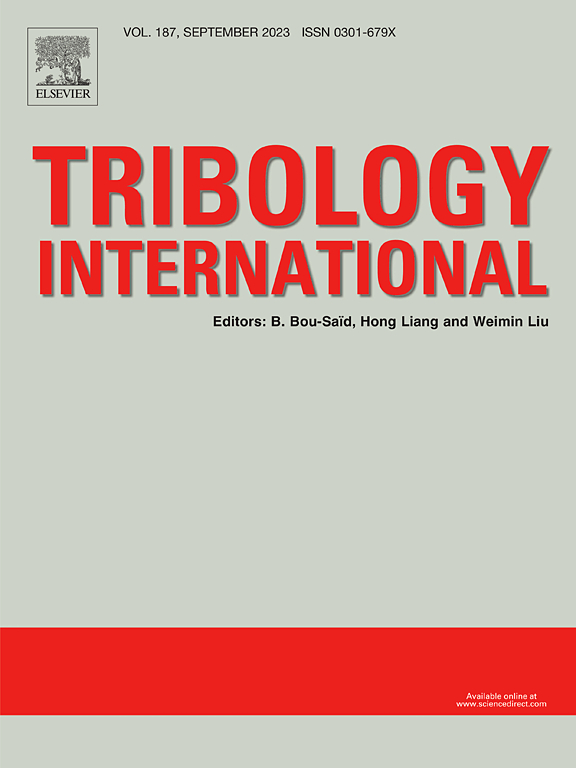不同氢含量H-DLC膜在氮气和氧气环境中的摩擦磨损机理:反应分子动力学的见解
IF 6.1
1区 工程技术
Q1 ENGINEERING, MECHANICAL
引用次数: 0
摘要
本文通过ReaxFF MD模拟研究了不同N2和O2中氢含量H-DLC膜的摩擦磨损机理。N2和O2能显著降低H-DLC膜的摩擦磨损,有效抑制摩擦界面的交联和结构变形。随着氢含量的增加,氢原子钝化了膜表面的游离C悬浮键。在N2气氛下,N2在摩擦界面处引起物理吸附,使摩擦形式由剪切变形变为气相润滑。在O2气氛下,H-DLC膜被O2氧化形成含氧基团,作为界面间低剪切强度的润滑剂,实现低而稳定的摩擦。本文章由计算机程序翻译,如有差异,请以英文原文为准。
Friction and wear mechanisms of H-DLC films with different hydrogen contents in nitrogen and oxygen atmospheres: Insights from reactive molecular dynamics
This study investigates friction and wear mechanisms of H-DLC films with varying hydrogen contents in N2 and O2 through ReaxFF MD simulation. N2 and O2 can significantly reduce the friction and wear of H-DLC films, effectively inhibit the cross-linking and structural deformation of the friction interface. As the hydrogen content increases, hydrogen atoms passivate the free C suspension bonds on the surface of the films. In the N2 atmosphere, N2 causes physical adsorption at the friction interface, resulting in the change of friction form from shear deformation to gas phase lubrication. In the O2 atmosphere, H-DLC films are oxidized by O2 to form oxygen-containing groups, serves as a low-shear strength lubricant between interfaces to achieve low and stable friction.
求助全文
通过发布文献求助,成功后即可免费获取论文全文。
去求助
来源期刊

Tribology International
工程技术-工程:机械
CiteScore
10.10
自引率
16.10%
发文量
627
审稿时长
35 days
期刊介绍:
Tribology is the science of rubbing surfaces and contributes to every facet of our everyday life, from live cell friction to engine lubrication and seismology. As such tribology is truly multidisciplinary and this extraordinary breadth of scientific interest is reflected in the scope of Tribology International.
Tribology International seeks to publish original research papers of the highest scientific quality to provide an archival resource for scientists from all backgrounds. Written contributions are invited reporting experimental and modelling studies both in established areas of tribology and emerging fields. Scientific topics include the physics or chemistry of tribo-surfaces, bio-tribology, surface engineering and materials, contact mechanics, nano-tribology, lubricants and hydrodynamic lubrication.
 求助内容:
求助内容: 应助结果提醒方式:
应助结果提醒方式:


